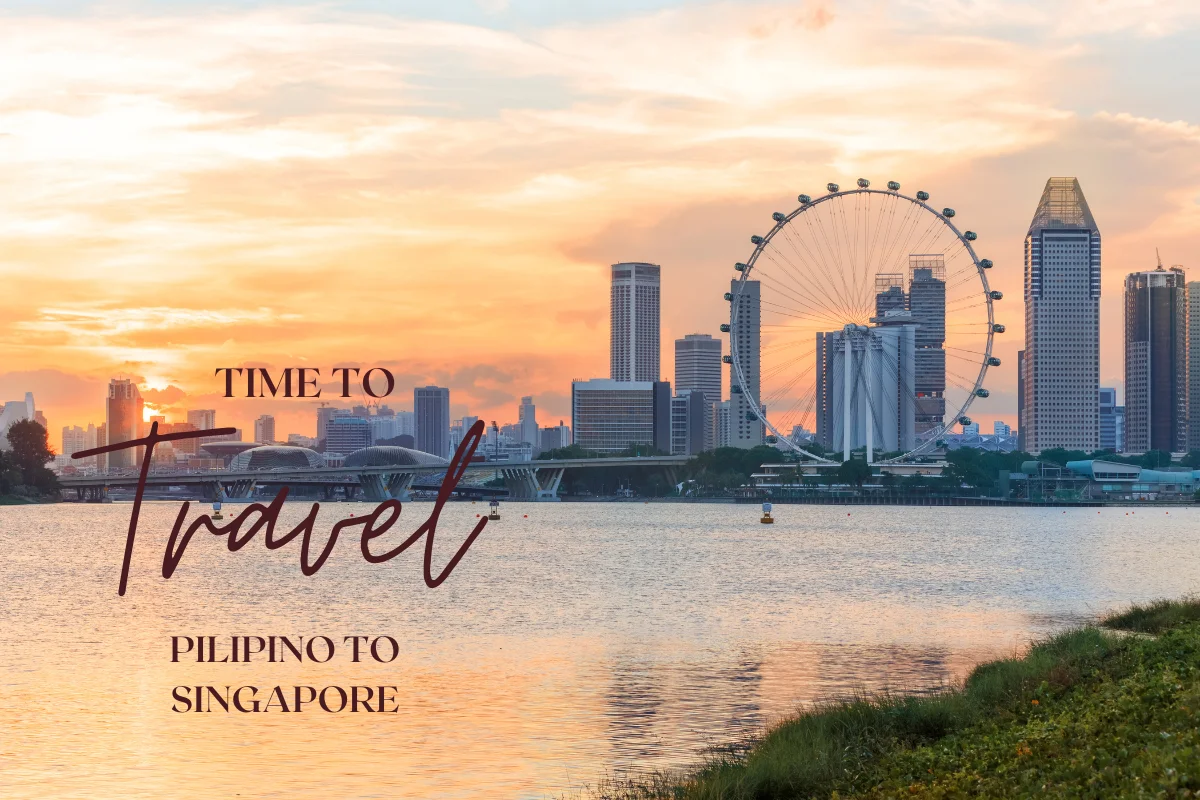Singapore is one of the most exciting and accessible destinations for Filipino travelers. Located just a few hours away by plane, it offers a perfect mix of modern city life and rich cultural heritage.
Many Filipinos choose Singapore for short vacations, family trips, business visits, and even quick weekend getaways because of its cleanliness, safety, and impressive tourist attractions.
For first-time visitors, Singapore feels both familiar and different. English is widely spoken, which makes it easy to communicate and navigate around the city.
At the same time, you will be surrounded by a fascinating blend of cultures, from Chinese temples and Indian markets to Malay heritage sites and futuristic cityscapes.
Whether you want to explore world-class attractions like Marina Bay Sands and Gardens by the Bay, shop in Orchard Road, or taste authentic dishes at hawker centres, there is something for everyone.
Singapore for the first time or returning for another trip, this article will help you plan with confidence and make the most of your travel experience.
~Visa and Entry Requirements for Filipinos :
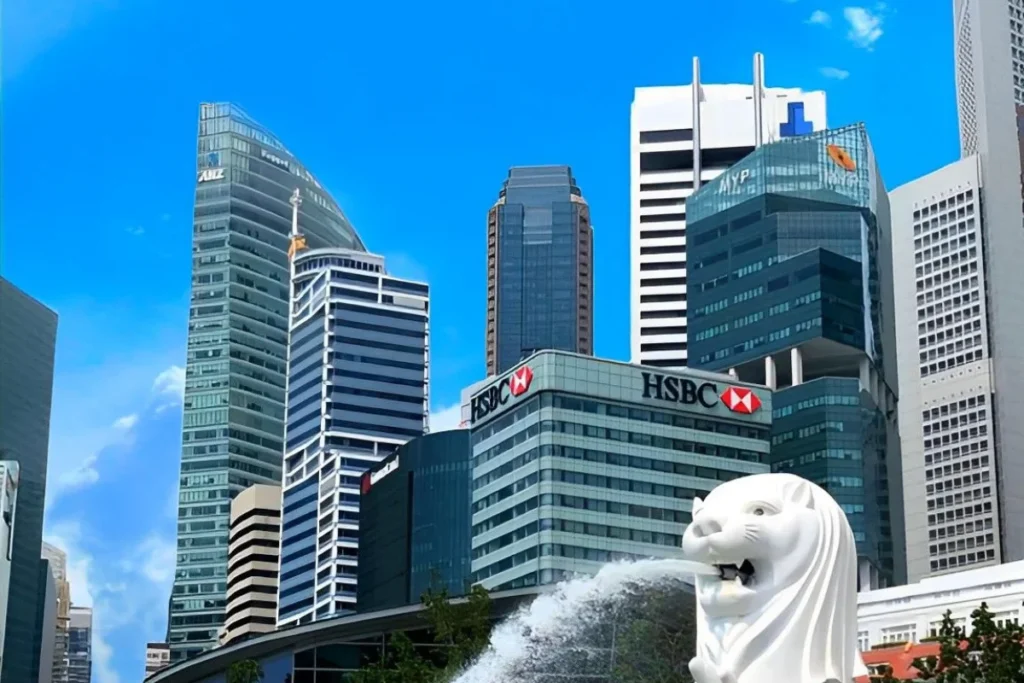
Traveling from the Philippines to Singapore is simple for most Filipino travelers. The country has clear rules for travelers.
The country has clear rules and processes that make short trips easy to plan. Before your journey, it is
important to understand visa requirements, travel documents, and the Singapore Arrival Card.
1. Do Filipinos Need a Visa for Singapore?
Filipinos do not need a visa to enter Singapore for short stays. The Philippines is included in the list of Singapore visa-free countries. This means that for tourism, business meetings, or social visits, you can enter Singapore without applying for a visa in advance.
For visa-free entry, Filipino travelers are usually allowed to stay in Singapore for up to 30 days.
During this period, you can explore the city, visit attractions, attend events, or meet friends and family. It is important to respect this duration because overstaying can result in fines or travel restrictions in the future.
If you plan to stay in Singapore for longer than 30 days or for purposes such as work, study, or permanent relocation, you will need to apply for a specific Philippine visa to Singapore.
These visas are processed through the Immigration and Checkpoints Authority (ICA) or the Ministry of Manpower, depending on your reason for the extended stay.
Always check the official guidelines before your trip to ensure you apply for the correct visa type.
2. Travel to Singapore Requirements (Official Guidelines)
Even though a short-term visa is not required, there are some official travel requirements to Singapore from the Philippines that all visitors must follow.
- Valid Passport: Your passport should have at least six months validity from your planned date of entry. Airlines may deny boarding if your passport is close to expiration.
- Return Ticket: You should have a confirmed return or onward ticket. Immigration officers may ask for proof that you intend to leave Singapore within the allowed period.
- Proof of Funds and Accommodation Details: Travelers may need to show that they have enough funds to cover their stay. It is also helpful to have hotel reservations or a clear plan for where you will be staying. Having these documents ready ensures a smooth entry process.
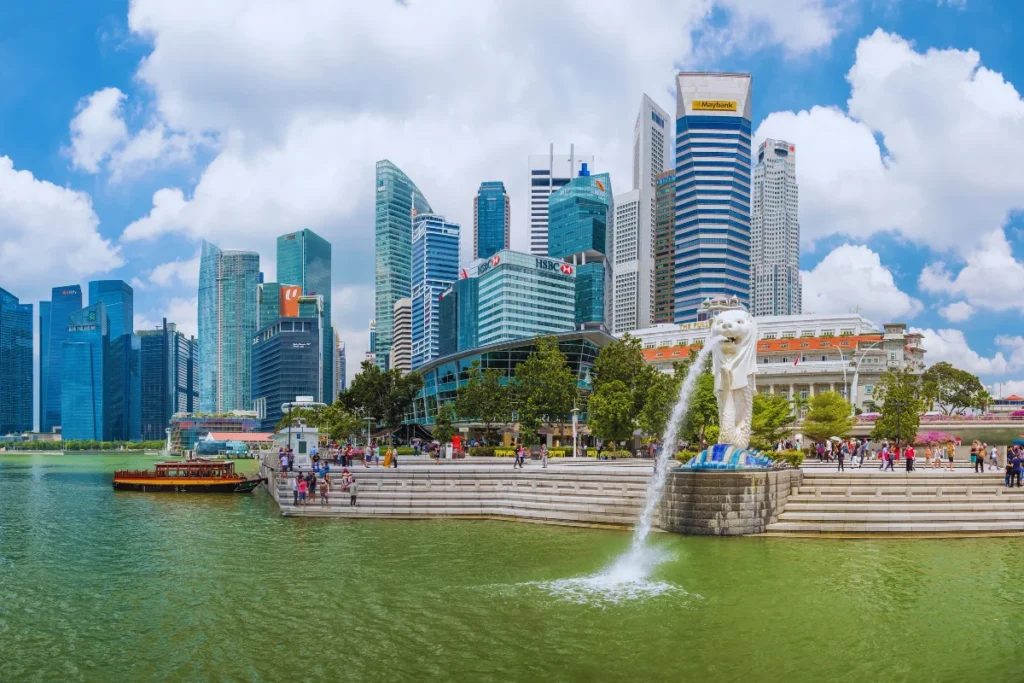
3. Singapore Arrival Card Process:
Before entering Singapore, all travelers are required to submit a Singapore Arrival Card. This digital form is used to provide essential travel and health information to immigration authorities.
- What is the Singapore Arrival Card? It is an online document that includes your personal details, travel information, and address in Singapore. It replaces the traditional paper disembarkation card.
- How to Submit It Online: You can submit the Arrival Card online up to three days before your flight. The form is easy to fill out and usually only takes a few minutes. After submission, you will receive an acknowledgment email or QR code that you need to show at immigration.
- Timeline and Tips for Hassle-Free Submission: Completing the card in advance helps avoid delays at the airport. Make sure your passport information is entered correctly and your accommodation details are accurate.If you are traveling with family, each person must submit a separate Arrival Card. Keep a digital copy or printout ready to present at immigration.
By understanding these visa and entry requirements, Filipino travelers can enjoy a smooth and worry-free trip to Singapore. Preparing your documents, submitting the Singapore Arrival Card, and knowing the rules for visa-free entry will ensure a seamless experience from the moment you leave the Philippines until you explore the sights of Singapore.
Planning your first trip from the Philippines to Singapore? Whether you’re visiting for work, leisure, or a quick getaway, it’s important to know the visa requirements, travel tips, and essentials before you go.
To make your journey smoother, staying connected is key; and that’s where Pirate Mobile eSIM comes in. With our hassle-free eSIM, you can enjoy instant data access in Singapore without worrying about roaming charges or SIM card swaps.
Overview: Traveling from the Philippines to Singapore
| Category | Details |
| Flight Duration | 3.5 to 4 hours (direct flights) |
| Departure Cities | Manila, Cebu, Clark, Davao |
| Average Ticket Price | PHP 6,000 – PHP 12,000 (round trip Manila–Singapore) |
| Budget Airlines | Cebu Pacific, AirAsia, Scoot |
| Full-Service Airlines | Philippine Airlines (includes baggage, meals, better schedules) |
| Booking Tips | – Watch for seat sales & promotions- Book early for cheaper fares- Compare prices across platforms- Check baggage & seat fees |
| Best Arrival Time | Daytime (easier for first-time travelers to navigate) |
| Climate | Tropical (warm & humid year-round) |
| Best Time to Visit | Feb–Apr: Drier weather & outdoor eventsJun–Aug: Busy, Great Singapore Sale & school holidaysNov–Jan: Rainy season, but many indoor attractions |
| Travel Planning Tip | Align trip with your budget, flight options, and preferred activities to maximize your experience. |
~Pre-Departure Preparation
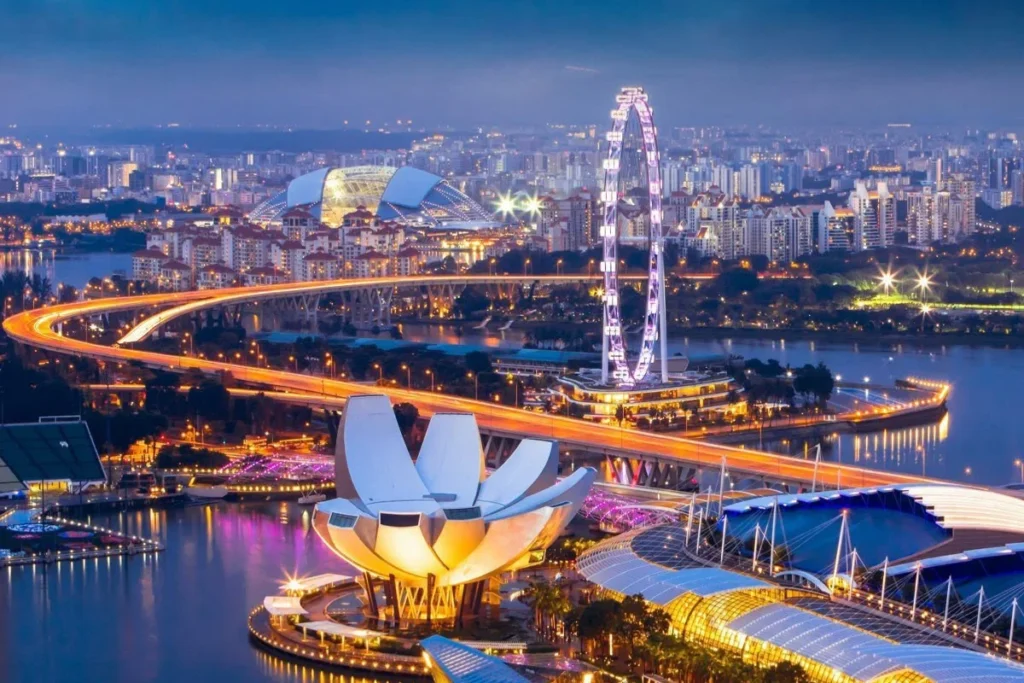
Proper preparation can make your trip from the Philippines to Singapore smooth and enjoyable. Planning flights, accommodation, budget, packing, and knowing local conditions will help you make the most of your visit.
1. Booking Flights and Accommodation:
Finding affordable flights is easier if you book in advance. Compare prices on airline websites and travel platforms. Airlines like Cebu Pacific, Philippine Airlines, Scoot, and AirAsia often have promotions.
Booking early can save you money and give you more options for flight times.
Choosing the right accommodation is important, especially for first-time visitors. Popular areas include Orchard, Marina Bay, Little India, and Bugis.
Orchard is ideal for shopping and city views. Marina Bay is close to major attractions and offers luxury hotels. Little India and Bugis provide a cultural experience and more budget-friendly options.
Make sure your hotel or hostel is near public transportation to save time and travel easily around the city.
2. Currency and Budget Planning
Singapore uses the Singapore Dollar (SGD). You can exchange Philippine Pesos (PHP) at banks, money changers, or withdraw cash from ATMs in Singapore. Check with your bank for international fees.
Daily expenses in Singapore vary depending on your travel style. Budget travelers may spend around 50 to 100 SGD per day on food, transport, and attractions.
Mid-range travelers usually spend 100 to 200 SGD. Travelers looking for luxury experiences may spend more. Planning your budget helps avoid surprises and ensures you have enough money for your trip.
3. Packing and Travel Essentials
Singapore is warm and humid all year. Pack light, breathable clothes and comfortable shoes for walking. If you travel during November to January, carry a small umbrella or raincoat for sudden showers.
Bring a travel adapter as Singapore uses Type G plugs. Charge your electronics before leaving and consider carrying a portable power bank.
Do not forget important documents like your passport, flight tickets, hotel reservations, and the Singapore Arrival Card confirmation.
4. Ideal Travel Months and Weather
The best months to visit Singapore are February to April. The weather is usually drier, which makes outdoor sightseeing more enjoyable.
May to August can be hot and humid, and crowds are bigger during holidays and sales events. November to January is the rainy season, so plan indoor activities or carry rain gear.
5. Payments and Currency
Cashless payments are widely accepted in Singapore. Credit cards, debit cards, and mobile wallets like PayNow and GrabPay are convenient. It is still useful to carry some cash for small purchases or hawker stalls that may not accept cards.
By carefully planning flights, accommodation, budget, packing, and knowing the best time to visit, you can enjoy your trip to Singapore comfortably and confidently. Proper preparation allows you to focus on exploring the city and creating memorable experiences.~Food and Dining in Singapore
~Food and Dining in Singapore
- Cultural melting pot – Singapore’s food reflects its diverse heritage with Chinese, Malay, Indian, Peranakan, and international cuisines.
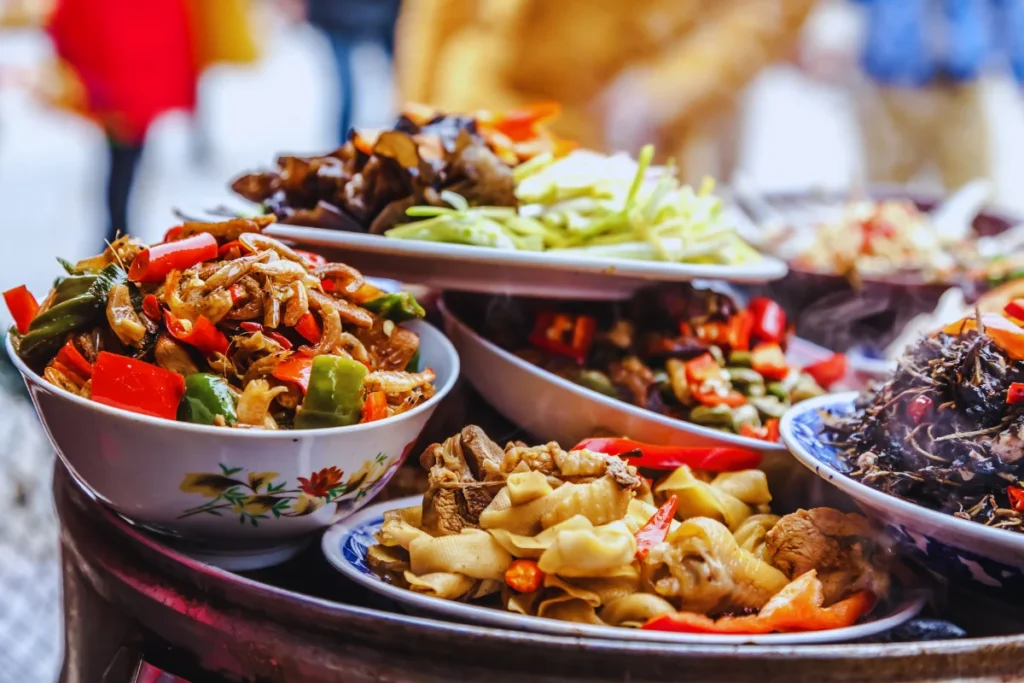
- Options for every budget – From hawker stalls to luxury fine dining, there’s something for everyone.
Hawker Centers (Must-Visit)
- Affordable and delicious meals starting from 4–6 SGD.
- Famous spots: Maxwell Food Centre, Lau Pa Sat, Chinatown Complex.
- Must-try dishes:
- Hainanese chicken rice
- Laksa
- Char kway teow
- Satay
- Chili crab
- Hainanese chicken rice
Mid-Range Dining
- Casual restaurants, cafes, and mall food courts.
- Mix of local and international cuisines.
- Modern twists on traditional Singaporean dishes.
Luxury Dining
- Fine dining with award-winning chefs.
- Locations: Marina Bay Sands, Sentosa, Orchard Road.
- Gourmet meals, tasting menus, and stunning views.
Street Food Highlights
- Night markets and small stalls with local snacks:
- Kaya toast
- Curry puffs
- Ice kachang
- Kaya toast
Drinks to Try
- Kopi (local coffee).
- Teh tarik (pulled tea).
- Singapore Sling cocktail at Raffles Hotel (its birthplace).
~English-speaking Locals and Filipino-friendly Culture
One of the reasons many Filipinos feel comfortable traveling to Singapore is the language. English is one of the official languages of the country, and it is widely spoken by locals.
Signs in public places, train stations, airports, and shopping centers are also written in English. This makes it easy for first-time visitors to ask for directions, order food, and communicate with people without any language barrier.
For Filipinos who may not be fluent in other languages, this is a big advantage. You will not have to worry about getting lost or struggling to understand instructions.
Even in hawker centers and small shops, most vendors can speak basic English, so ordering food or asking simple questions is easy.
Apart from language, the culture in Singapore feels welcoming to Filipinos. The city is home to a large Filipino community, many of whom work in various industries, from healthcare to hospitality.
On Sundays, you can even see groups of Filipinos gathering in areas like Lucky Plaza on Orchard Road, which has become a popular meeting place. It feels a little like home away from home.
Singapore is also a multicultural country, where people of different backgrounds live and work together.
Locals are used to interacting with foreigners, so they are generally polite and respectful. For Filipinos visiting for the first time, this creates a sense of comfort and belonging.
The Filipino-friendly culture also extends to food, shops, and churches. You can find Filipino restaurants and grocery stores in different parts of the city, which can be comforting if you miss home-cooked meals.
Catholic churches also welcome many Filipinos every week, and services are often available in English. Because of these factors, many Filipinos enjoy traveling to Singapore not only for sightseeing but also for the warm and familiar environment.
The combination of English-speaking locals and a Filipino-friendly culture makes the city one of the easiest and most enjoyable destinations to visit from the Philippines
~Things to Do in Singapore
Singapore is full of exciting places to explore.If you are going to Singapore for the first time, this list will help you plan your itinerary.
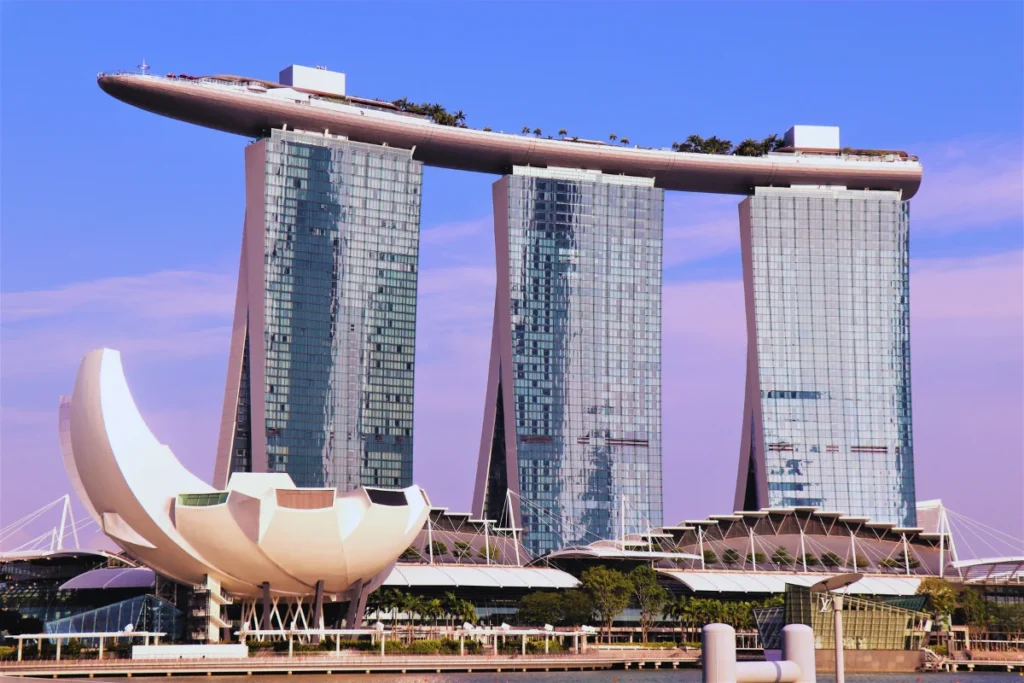
1. Iconic Attractions
- Marina Bay Sands
This world-famous landmark is one of the most photographed spots in Singapore. Marina Bay Sands is not only a luxury hotel but also home to an observation deck where you can enjoy panoramic views of the city skyline. Even if you are not staying at the hotel, you can visit the SkyPark Observation Deck or the Infinity Pool area for a unique experience. At night, the Marina Bay Sands light and water show is free to watch and is a favorite among visitors. - Gardens by the Bay
Located next to Marina Bay Sands, Gardens by the Bay is a must-see attraction. The Supertree Grove, with its giant tree-like structures, lights up beautifully in the evening. You can also visit the Flower Dome and Cloud Forest, which feature plants and flowers from around the world. The combination of nature and futuristic design makes this one of the most unique parks in Asia. - Merlion Park
No trip to Singapore is complete without visiting the Merlion, the iconic half-lion, half-fish statue. Located near Marina Bay, this spot is perfect for photos with the city skyline in the background. The Merlion is a symbol of Singapore and is popular with first-time visitors who want a memorable travel picture. - Sentosa Island
Sentosa is Singapore’s island of fun and relaxation. You can get there by cable car, monorail, or even by walking along the Sentosa Boardwalk. The island offers beaches, resorts, and attractions such as Adventure Cove Waterpark, S.E.A. Aquarium, and Madame Tussauds. For those who love adventure, there are also activities like zip-lining and indoor skydiving.
2. Cultural Hotspots
- Chinatown
Chinatown is the heart of Chinese culture in Singapore. Here you will find traditional temples, souvenir shops, and plenty of food stalls. The Buddha Tooth Relic Temple and Museum is one of the highlights of this area. Chinatown is also a great place to buy affordable souvenirs and taste local street food such as dumplings and roast duck. - Little India
Little India is full of colors, scents, and lively markets. The Sri Veeramakaliamman Temple is a popular site to visit, showcasing traditional Hindu architecture. You can also shop for spices, jewelry, and textiles in the bustling markets. For food lovers, Little India offers delicious curries and vegetarian dishes. - Kampong Glam
Kampong Glam is known for its Malay and Arab heritage. The main highlight is the Sultan Mosque with its impressive golden dome. The surrounding streets are lined with boutique shops, cafes, and Middle Eastern restaurants. Haji Lane is particularly famous for its vibrant street art and trendy fashion stores.
3. Family-Friendly Activities
- Singapore Zoo
The Singapore Zoo is one of the best in the world. It is designed with open enclosures that make you feel closer to the animals. Families can enjoy feeding sessions, animal shows, and interactive experiences. The zoo is home to more than 2,800 animals, making it a fun and educational trip for children and adults alike.
- Night Safari
Located next to the Singapore Zoo, the Night Safari offers a completely different experience. It is the world’s first nocturnal wildlife park, where visitors can see animals active at night. The tram ride takes you through different zones, and walking trails give you a closer look at the animals in their natural habitats. - Universal Studios Singapore
Situated on Sentosa Island, Universal Studios is perfect for thrill-seekers and families. The theme park has rides, shows, and attractions based on famous movies. Popular zones include Jurassic Park, Transformers, and Shrek’s Far Far Away. It is a full-day activity and a highlight for children and young-at-heart travelers.
4. Hidden Gems
- MacRitchie Reservoir
If you enjoy nature walks, the MacRitchie Reservoir is a peaceful escape from the busy city. The Treetop Walk, a suspension bridge high above the forest, offers a beautiful view of the greenery. It is also a great place for jogging, hiking, or kayaking. - Haw Par Villa
This cultural theme park is one of Singapore’s most unusual attractions. It features statues and dioramas that depict Chinese folklore, legends, and moral lessons. It is both educational and quirky, making it an interesting stop for curious travelers.
- Southern Ridges
The Southern Ridges is a series of walking trails that connect several parks across Singapore. The Henderson Waves Bridge is the highlight, offering a stunning architectural design and scenic views. This hidden gem is perfect for those who enjoy walking in a quiet, green environment. - Pulau Ubin
For a glimpse of Singapore’s rural past, visit Pulau Ubin, a small island northeast of the main city. You can take a short boat ride to get there. The island has cycling trails, traditional kampong houses, and mangrove forests. It is a refreshing contrast to the modern city and a great spot for outdoor activities.
“If you’re planning your first trip from the Philippines to Singapore, it’s also worth exploring other travel inspirations. For instance, check out our guide on the Best Places to Travel in October in USA, Europe & International Ideas to discover more exciting destinations beyond Singapore.”
~Travel Tips and Common Mistakes to Avoid
Traveling to Singapore is a smooth experience if you prepare well and understand local rules. The country is known for being clean, safe, and orderly. As a visitor, it is important to respect local customs and avoid mistakes that can affect your trip.
Respecting Local Laws and Customs
Singapore has strict laws that help keep the city safe and organized. Public behavior matters, so always be polite and respectful. For example, giving up your seat for the elderly or pregnant women in public transport is expected.
Dressing modestly when visiting temples or mosques is also a sign of respect. Always follow instructions when entering cultural or religious sites.
- Avoiding Hefty Fines
Many travelers are surprised by Singapore’s strict rules, but these rules are one of the reasons the country is so clean. Chewing gum is banned, so do not bring or use it during your visit. Littering, jaywalking, and smoking in non-smoking areas can lead to fines. Even eating or drinking inside MRT trains is not allowed. Paying attention to these small rules will help you avoid unnecessary trouble. - Tips for First-Time Visitors
If you are going to Singapore for the first time, keep your passport and important documents safe at all times. Make copies of your travel documents in case of emergencies. Use public transportation like the MRT and buses, which are efficient and affordable. A stored value card such as the EZ-Link or NETS FlashPay will make your travel easier. - Weather
The weather is hot and humid, so wear light clothing and carry a water bottle to stay hydrated. An umbrella can be useful for sudden rain showers. When shopping, keep receipts for larger purchases in case you need them for tax refunds at the airport.
~Finally, always plan your days. Singapore has many attractions close to each other, so grouping nearby spots can save you time. By respecting the local culture, following rules, and preparing wisely, you can enjoy a smooth and memorable trip in Singapore.
~Frequently Asked Questions (FAQ)
Do Filipinos need a visa for Singapore?
No, Filipinos do not need a visa for short visits to Singapore. The Philippines is part of the Singapore visa free countries list. This means you can enter Singapore for tourism, business, or short trips without applying for a visa.
How long can a Filipino stay in Singapore without a visa?
Filipinos can stay in Singapore for up to 30 days without a visa. If you want to stay longer, you will need to apply for an extension or a different type of visa. Always check your passport stamp upon arrival to confirm your allowed stay.
What are the travel requirements to Singapore from the Philippines?
The basic requirements include a valid passport with at least six months of validity, a confirmed return ticket, proof of accommodation, and enough funds to cover your stay. These are standard travel requirements to Singapore from the Philippines.
What is the Singapore Arrival Card and how do I get it?
The Singapore Arrival Card is an online form that travelers must complete before entering the country. It collects basic details such as your personal information, flight details, and travel history. You can submit it online through the official ICA website or mobile app up to three days before your arrival. Once submitted, keep a copy of the confirmation for smooth entry at immigration.
Is Singapore expensive for Filipino travelers?
Singapore is known for being one of the more expensive cities in Asia, but with smart planning, it can be affordable. Hawker centers offer delicious meals at budget-friendly prices, and public transport is efficient and low-cost. Budget hotels and hostels are available in areas like Little India and Bugis. With careful planning, Filipino travelers can enjoy Singapore without overspending.
